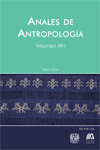Ulama: past, present and future of Mesoamerican ballgame
Main Article Content
Abstract
The Mesoamerican ballgame has a history dating back 3 500 years. The game was such an integral part of the society, that nearly 2 000 ballcourts have been reported in the territory extending from the American Southwest to El Salvador. The institution was complex and carried diverse meanings and functions, such as: portal to the Underworld, the setting for reenactments of cosmic battles between celestial bodies, fertility rituals, warfare ceremonies, political affirmation of kingship, setting for human sacrifices, etc. The central importance of the ballgame is attested to by the fact that is clearly portrayed in the art of the Olmec, Zapotec, Maya, Toltec and Aztec and was an important element in a pan-Mesoamerican cosmovision.
The Spanish immediately recognized that the ballgame was a great deal more significant than merely recreation so they vigorously suppressed its playing. Interestingly, a modern form of the ancient game, known as ulama, has survived in a small number of remote communities outside of the city of Mazatlan in the state of Sinaloa, Mexico.
Between 2003 and 2013, I led a multi-disciplinary investigation about Ulama that involved eight Cal State L.A. students and was called Proyecto Ulama. Our study focused on the history, folklore, and the social significance and cultural context of the game. A book about the findings of Proyecto Ulama is in preparation, but in this article I present some of the results of our research project.
Downloads
Article Details
Citas en Dimensions Service
Esta revista usa una licencia CC del tipo CC BY-NC-ND 3.0. Se maneja bajo el esquema de acceso abierto, con una licencia Creative Commons Attribution-NonCommercial-NoDerivs 3.0 Unported.
